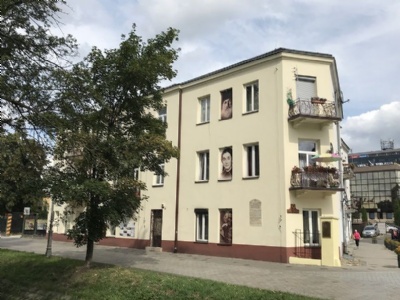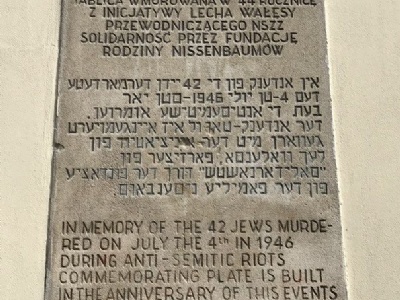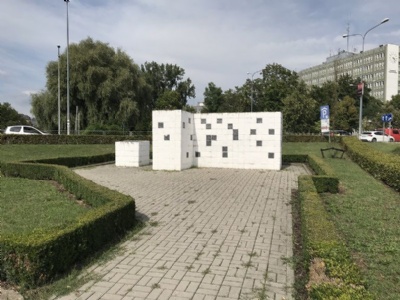Kielce – Planty 7
When Kielce was liberated by the Soviet Red army in January 1945, about 150 jews returned to their homes after being hiding out. The Jews settled in a building that belonged to a Jewish community and the ambition of many of them was to emigrate to Palestine. In early July, 1946, the Jews were accused of abducting and ritually murdering a Polish boy. A furious mob gathered outside the building demanding the boy be returned. But no boy had been murdered and therefore there was no boy to return. On July 4, the situation escalated, which resulted in 42 Jews being beaten to death and about 50 injured before the pogrom was stopped by Polish troops. The next day, the boy was found alive in a nearby village without any crime having been committed. Seven mob leaders were arrested and sentenced to death for murder in connection with the pogrom. For the Jews who survived the Holocaust, the pogrom was proof that anti-Semitism in Poland did not disappear with the defeat of Nazi Germany. After this pogrom more and more Jews emigrated from Poland.
Current status: Preserved with museum (2019).
Address: Planty 7, 25–510 Kielce.
Get there: Walk from central Kielce.
Follow up in books: Gilbert, Martin: The Holocaust: A History of the Jews of Europe During the Second World War (1987).




To my surprise, there is a small but modern and interesting museum on the ground floor. Crimes against Jews committed by Christian poles are still a sensitive subject in Poland. Especially since it happened after the war without any German interference to hide behind.